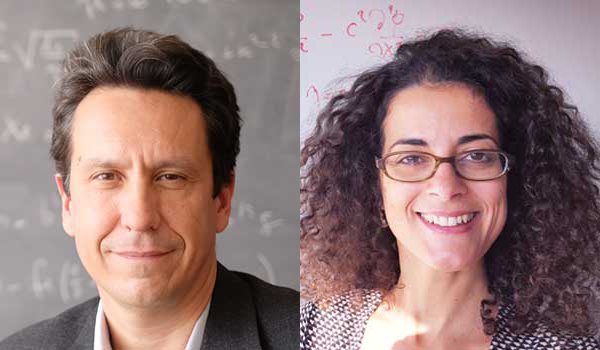Collective behaviour in biological systems runs wildly across scales in both space and time, from bacteria and cell clusters, to insect swarms, bird flocks and up to vertebrate groups. It entails concepts as diverse as coordination, emergence, interaction, information, cooperation, and decision-making. Amid this jumble, however, we cannot help noticing startling similarities with collective behaviour in statistical physics, even though none of these organisms remotely looks like an Ising spin. Such similarities regard the emergence of global dynamical patterns and system-level correlations from local interactions. It is therefore reasonable to tackle collective behaviour in biology within the conceptual framework of statistical physics, in the hope to extend to this field the predictive power of theoretical physics.
A possible objection to this approach is that statistical physics holds for systems with ~\(10^{23}\) particles, while in biological systems we are often looking at groups of a few thousands “particles”, which are in fact complex individuals that actively move with laws quite different from physical systems. We believe that our best chance to develop a statistical physics of living matter in a solid way is therefore to establish a firm empirical basis by gathering as much experimental evidence as possible and use it to test physics concepts directly on the biological data.
Bringing together in one single research effort experiments on collective biological systems and physics-inspired theory is exactly what the COBBS lab does. As in statistical mechanics, collective behaviour displays two phases: one in which all individuals synchronize, giving rise to a nonzero order parameter, and one in which local patterns emerge with zero order parameter. The two paradigmatic cases are bird flocks and insect swarms, and these are therefore the biological systems our lab has focused upon in the last decade. If you want to know more, you can find a set of brief stories about our most relevant results here.
Andrea Cavagna has been awarded an ERC Advanced Grant in Theoretical Physics (ERC panel PE2). The aim of the project — RG.BIO — is to extend and apply the beautiful conceptual tools of critical dynamics and the dynamical renormalization group, to strongly correlated biological systems. Within RG.BIO we are therefore now recruiting new postdocs to work on theoretical problems (background in statistical physics, field theory and critical phenomena). We are also looking for enthusiastic young researchers to be part of our new experimental team, which will have to develop a new panning system for 3D reconstruction. If you are interested in working with us on RG.BIO, send an email to Andrea Cavagna.
Max Delbruck Prize in Biological Physics 2021 |
|
 |
For the first time this prize of the American Physical Society has been awarded to non-American scientists. Andrea and Irene have been honored for the outstanding achievement in biological physics research, especially “for the incisive combination of observation, analysis, and theory to elucidate the beautiful statistical physics problems underlying collective behavior in natural flocks and swarms.“ |
Our cover stories
 |
 |
 |




